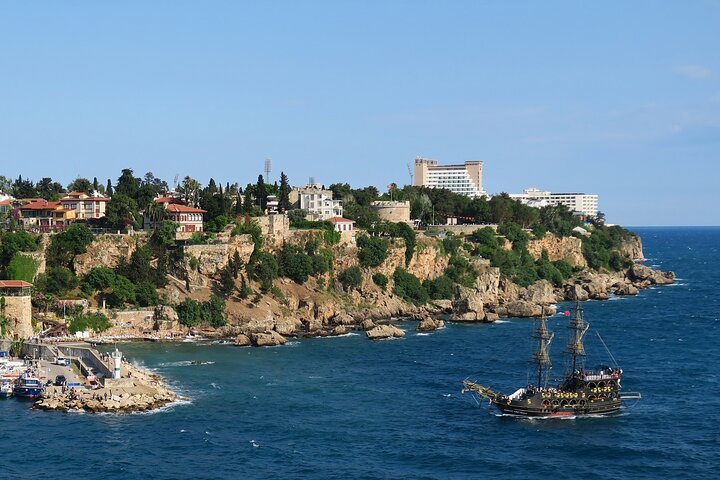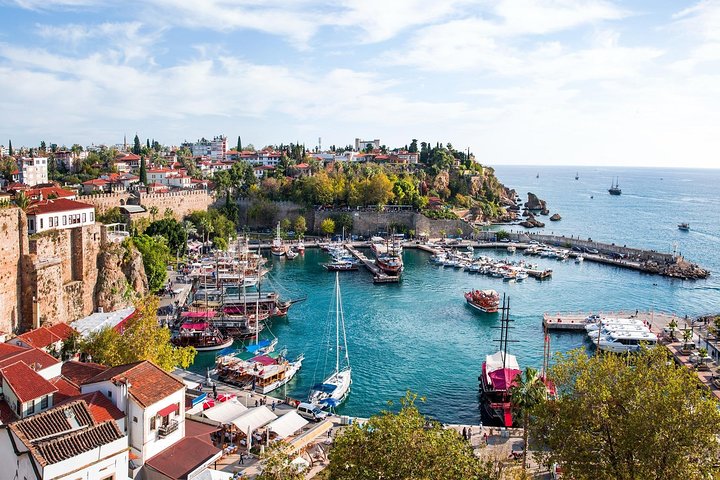Unveiling the Mysteries of Pamukkale: A Journey Through Time and Nature
Drawn by the allure of ancient ruins and natural wonders, I embarked on a journey to Pamukkale from Antalya. The promise of exploring Hierapolis and its Necropolis was irresistible.
The Enchanting White Terraces of Pamukkale
As we embarked on our journey from Antalya, the anticipation of witnessing the ethereal beauty of Pamukkale’s travertine terraces was palpable. These natural formations, often likened to a cascade of frozen waterfalls, are a testament to the wonders of nature. The calcium-rich waters have, over millennia, sculpted these terraces into a surreal landscape that seems almost otherworldly.
Upon arrival, the sight was nothing short of breathtaking. The stark white terraces, glistening under the Anatolian sun, contrasted beautifully with the azure sky. Walking barefoot on the terraces, feeling the warm water trickle over my feet, was a sensory delight. It was a moment of pure connection with nature, a reminder of the Earth’s incredible artistry.
The terraces are not just a visual spectacle but also a historical one. The ancient city of Hierapolis, perched above the travertines, adds a layer of historical intrigue to the natural beauty. This juxtaposition of nature and history is what makes Pamukkale a truly unique destination.
Exploring the Ancient City of Hierapolis
Our exploration of Hierapolis was a journey back in time. Founded in the 2nd century BC, this ancient city was a thriving center of commerce and culture. As a former professor of European history, I found myself captivated by the stories etched into the stones of this ancient metropolis.
The ruins of Hierapolis are remarkably well-preserved, offering a glimpse into the lives of its ancient inhabitants. The grand theater, with its impressive acoustics, stands as a testament to the city’s cultural significance. As I stood in the center of the amphitheater, I could almost hear the echoes of ancient performances reverberating through the ages.
The city’s thermal baths, once a hub of social activity, are another highlight. These baths, fed by the same mineral-rich waters that create the travertine terraces, were believed to have healing properties. Walking through these ancient structures, I could imagine the bustling life of Hierapolis, where people gathered not just for relaxation but also for social and political discourse.
The Haunting Beauty of the Necropolis
Our journey concluded with a visit to the Necropolis, the ancient cemetery of Hierapolis. This vast burial ground, with its ornate tombs and sarcophagi, offers a poignant glimpse into the beliefs and customs surrounding death in ancient Anatolia.
The Necropolis is a hauntingly beautiful place, where the silence is broken only by the whisper of the wind. As I wandered among the tombs, I was struck by the reverence with which the ancient inhabitants treated their dead. The elaborate carvings and inscriptions on the tombs speak of a deep respect for the afterlife, a theme that resonates across many ancient cultures.
This visit to the Necropolis was a fitting end to our exploration of Pamukkale and Hierapolis. It served as a reminder of the transient nature of life and the enduring legacy of those who came before us. As we made our way back to Antalya, I felt a profound sense of gratitude for the opportunity to walk in the footsteps of history, to witness the wonders of nature and the echoes of ancient civilizations.




































